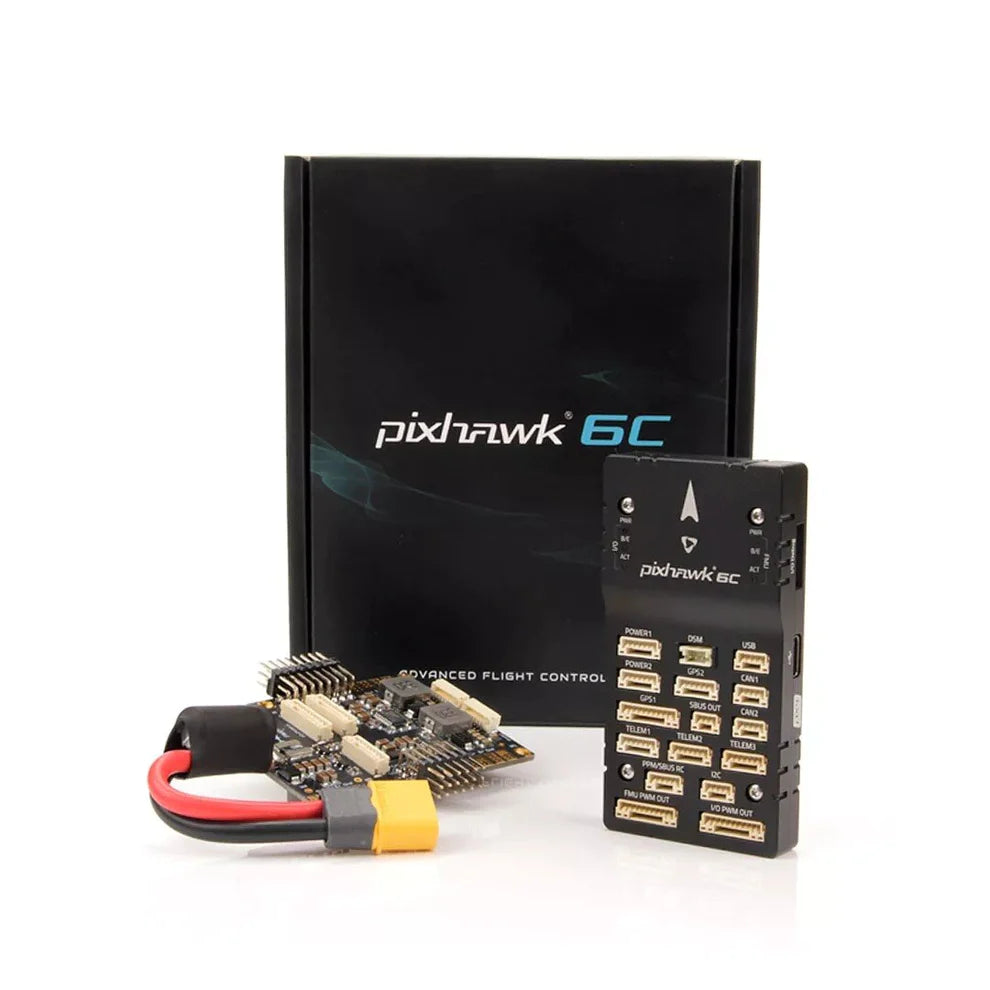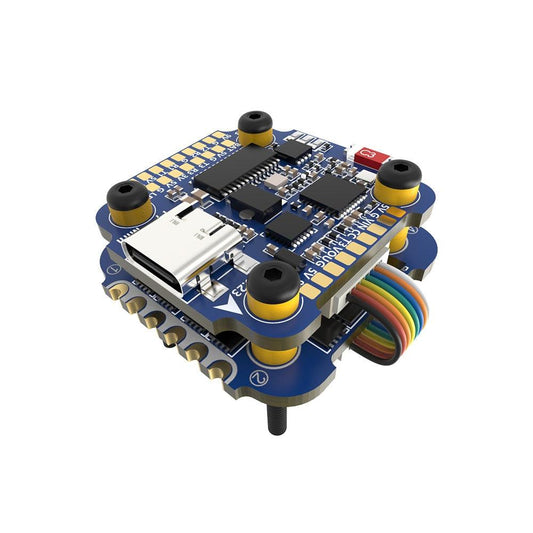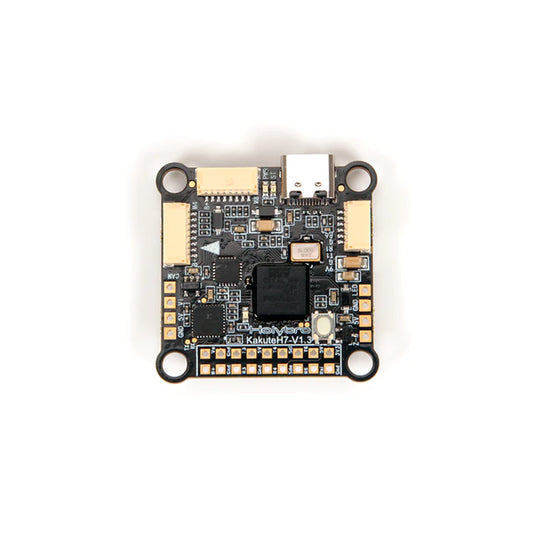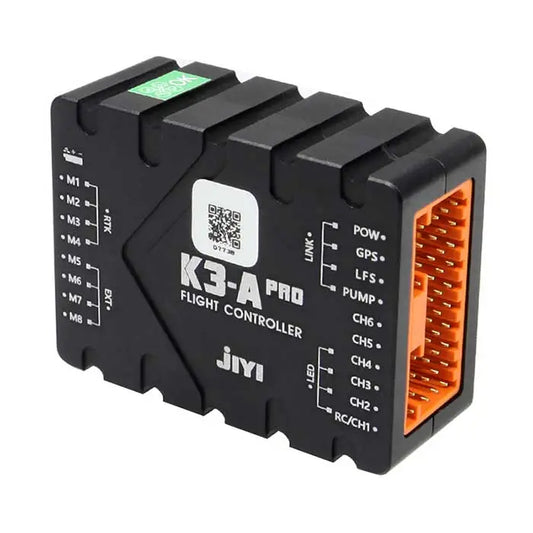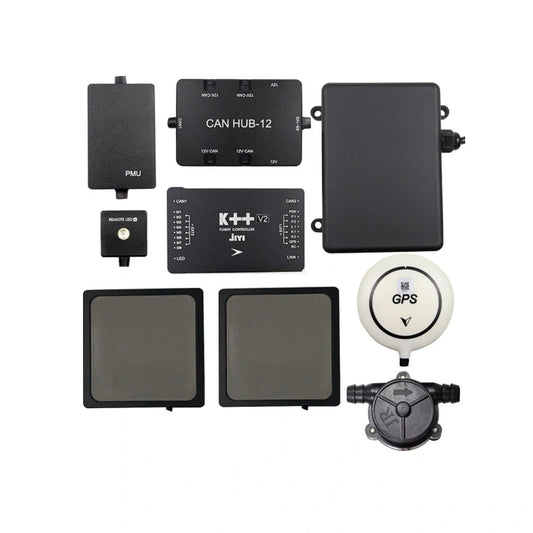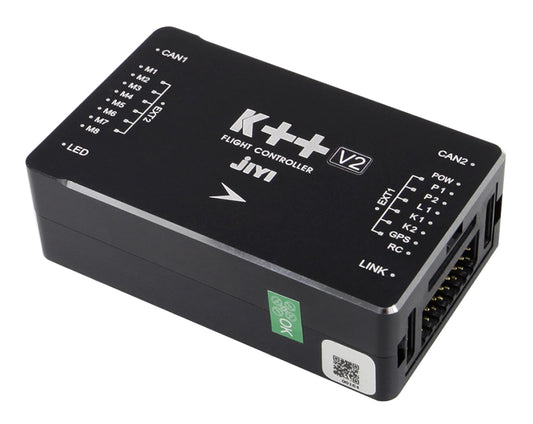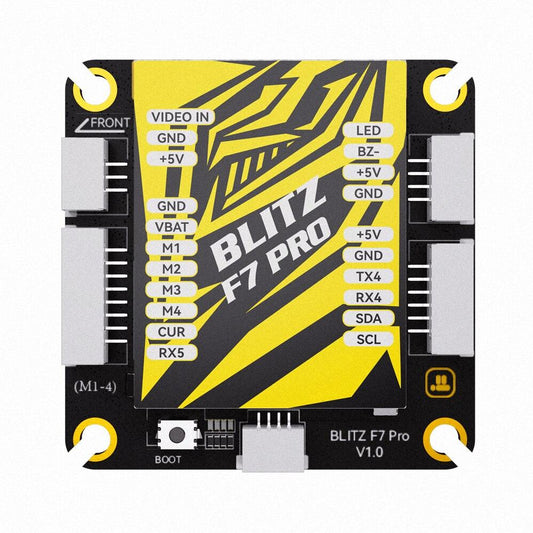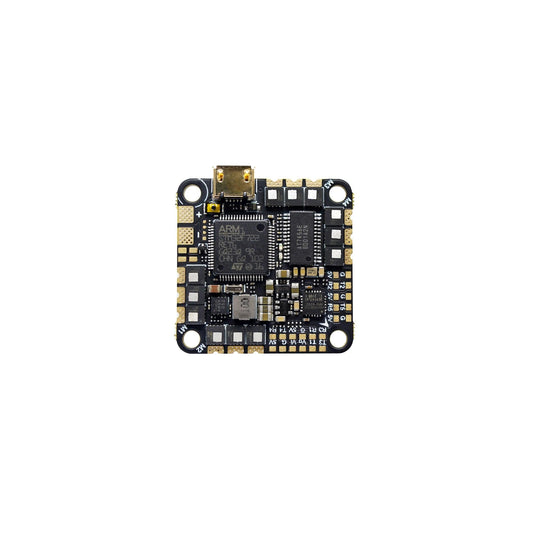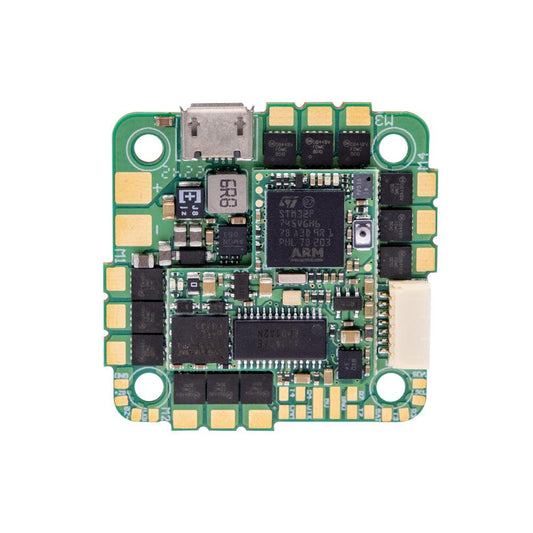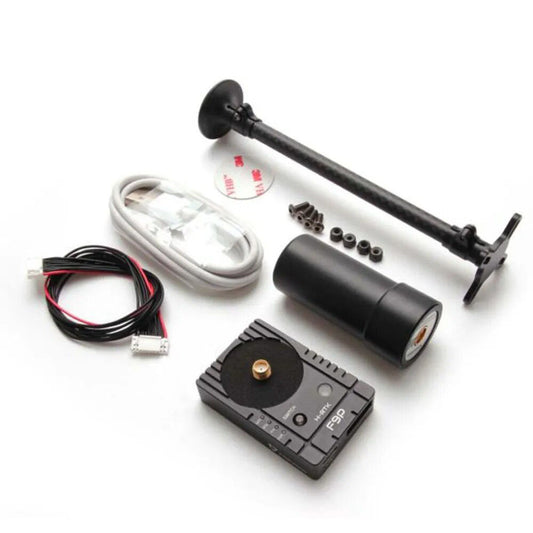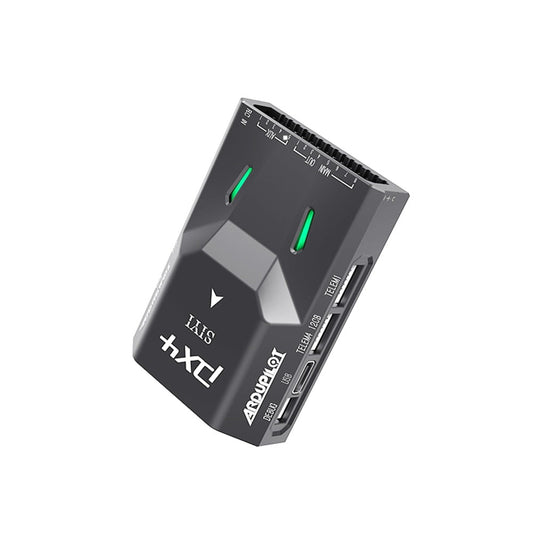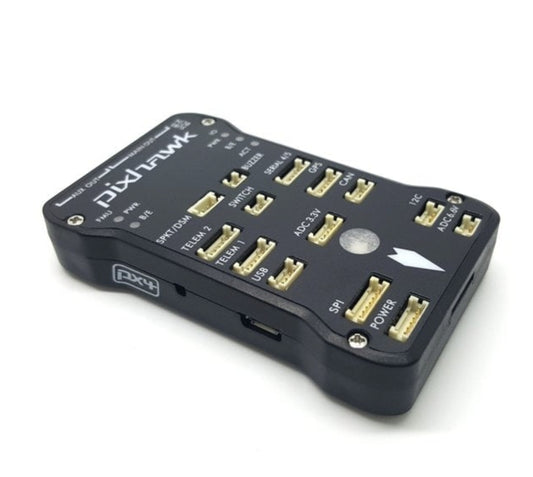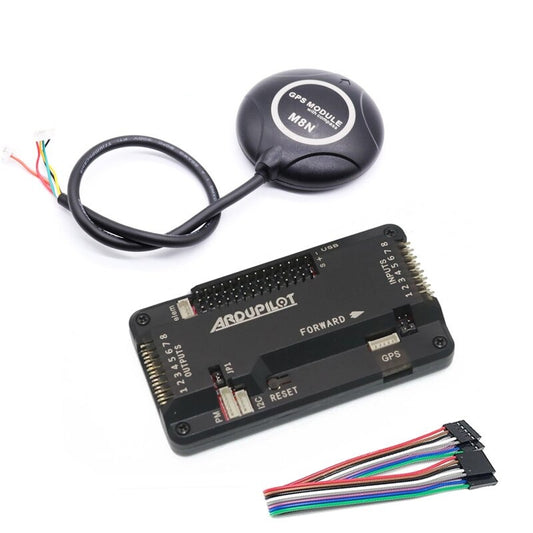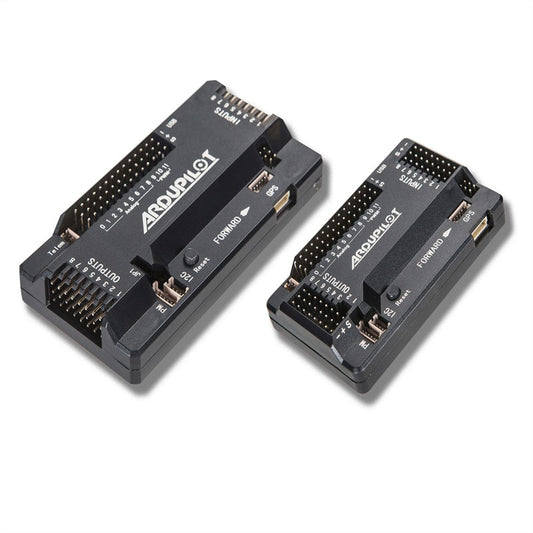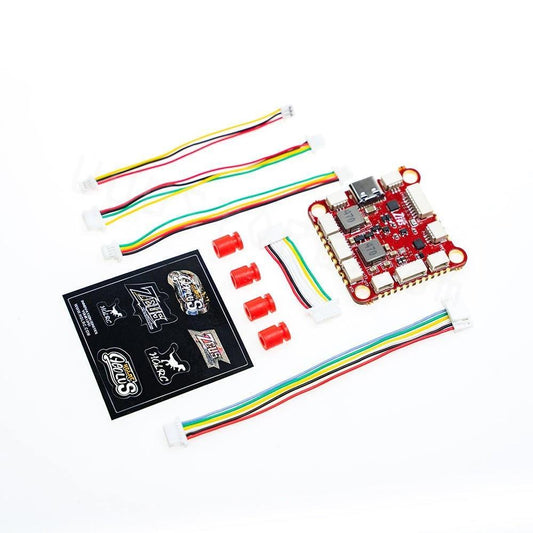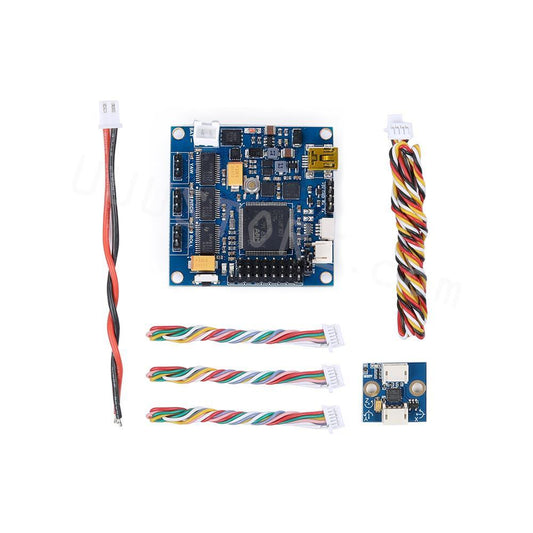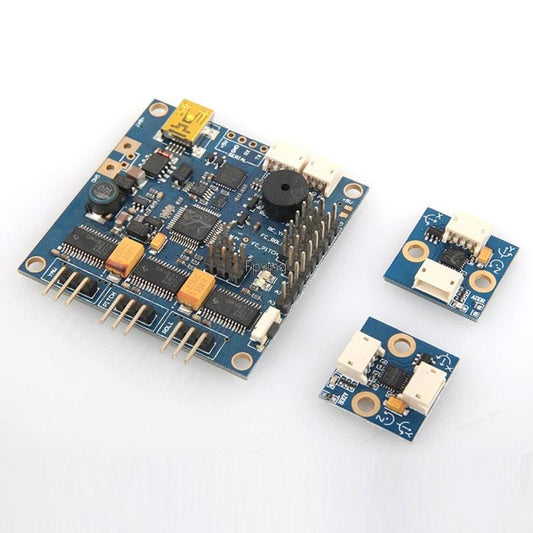Flight Controller Type
-

Flight Controller Stacks
Explore our premium selection of flight controller stacks for FPV drones, featuring...
-

F4 Flight Controller
F4 Flight Controller Collection features versatile and high-performance boards designed for FPV...
-

F7 Flight Controller
F7 Flight Controller Collection delivers enhanced computing power and features over F4-based...
-

H7 Flight Controller
The H7 Flight Controller Collection features a range of advanced autopilot systems...
-

Betaflight Flight Controllers
The Betaflight Flight Controller is a popular, high-performance controller designed specifically for...
-

INAV Flight Controllers
Explore the INAV Flight Controllers collection—precision-tuned for fixed-wing, multirotor, and VTOL drones....
-

Ardupilot Flight Controller
Explore our ArduPilot Flight Controller Collection, featuring powerful, open-source flight controllers from...
-

PX4 Flight Controllers
The PX4 Flight Controller collection offers open-source, high-performance autopilot systems for drones,...
-

SpeedyBee Flight Controllers
SpeedyBee offers a versatile range of high-performance flight controllers for FPV drones,...
-

Matek Flight Controller
The Matek Flight Controller collection offers a wide range of high-performance flight...
-

Kakute Flight Controller
The Kakute Flight Controller series by Holybro is designed for FPV drones,...
By Flight Controller Application
-

FPV Flight Controller
The FPV Flight Controller collection offers a wide range of powerful FCs—from...
-

Fixed Wing Flight Controller
Explore our premium range of Fixed Wing Flight Controllers, engineered for fixed-wing...
-
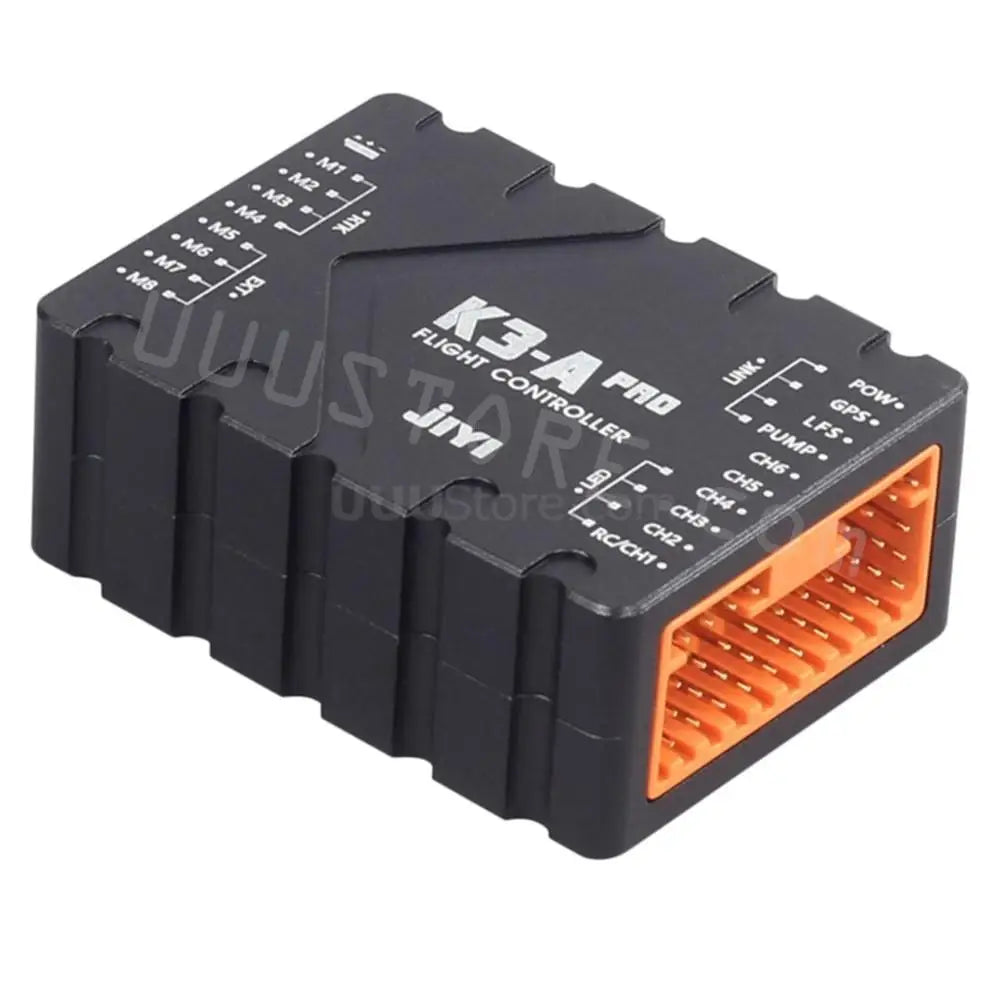
Agriculture Drone Flight Controller
The flight controller (FC) acts as the brain of an agricultural drone,...
-

Industrial Flight Controller
Unlock precision and performance with our Industrial Flight Controller collection, featuring top-tier...
-

VTOL Flight Controller
The VTOL Flight Controller features advanced flight controllers designed for Vertical Takeoff...
Flight Controller Brand
-

JIYI Flight Controller
JIYI specializes in advanced autopilot systems for agricultural and industrial drones. Its...
-

Holybro Autopilot Flight Controller
Explore the Holybro Autopilot Flight Controller series, featuring advanced solutions for fixed-wing,...
-

CUAV Autopilot Flight Controller
CUAV Autopilot Flight Controllers offer industrial-grade performance and compatibility with PX4...
-

iFlight Flight Controller
iFlight Flight Controllers: Precision Control for FPV Drones iFlight offers high-performance flight...
-

GEPRC Flight Controller
Discover the GEPRC Flight Controller collection—high-performance AIO and stack systems for FPV...
-

BOYING Flight Controller
Explore the BOYING Flight Controller collection, designed for precision agriculture drones. Featuring...
-
Speedybee F4 AIO Flight Controller Ver 2.0
Regular price $39.00 USDRegular priceUnit price per -
Speedybee F7 AIO Flight Controller
Regular price $65.00 USDRegular priceUnit price per -
SpeedyBee F7 Mini 35A 3-6S 8-bit Flight Controller Stack
Regular price From $68.47 USDRegular priceUnit price per -
Foxeer F722 V4 MPU6000 FC 8S Dual BEC Barometer X8 Flight Controller
Regular price $85.00 USDRegular priceUnit price per -
Foxeer F405 V2 (Plug) Flight Controller + Reaper 55A ESC 8S Stack Video Switcher Servo Borameter
Regular price From $45.00 USDRegular priceUnit price per -

TMOTOR Velox Cine F7 Flight Controller - Multifunctional FC for Freestyle Cinematic FPV Drones
Regular price $71.99 USDRegular priceUnit price per -
SIYI AI Tracking Module for Drone- 4T Computing Power Human Vehicle Multi-Target Recognition Anti-Lost
Regular price $338.11 USDRegular priceUnit price per -
CUAV 7-Nano Autopilot Flight Controller
Regular price From $189.00 USDRegular priceUnit price per -
GEPRC TAKER F411-12A-E 1~2S AIO 1-2S Blackbox 12A ESC Transmitter Flight Control System RC FPV Racing Drone for 1.2-2inch Whoop
Regular price $70.71 USDRegular priceUnit price per -
Holybro Kakute H7 v1.3 (MPU6000) Flight Controller
Regular price From $122.00 USDRegular priceUnit price per -
JIYI K3A Pro Flight Controller Autopilot FC for UAV Agriculture Spraying Drone
Regular price From $19.00 USDRegular priceUnit price per -
JIYI K ++ V2 Flight Controller GPS Radar Combo for Agriculture Spraying Drones, Autopilot FC With Terrain Radar,Obstacle Radar,Can Hub, Flow Meter
Regular price $1,179.00 USDRegular priceUnit price per -
JIYI K++ V2 Flight Controller Combo - New Generation Flight Controller PMU GPS LED Autopilot Combo for Agriculture Drones
Regular price $399.00 USDRegular priceUnit price per -
iFlight BLITZ F7 Pro Flight Controller with 35x35mm Mount pattern for FPV
Regular price $125.67 USDRegular priceUnit price per -
SpeedyBee F745 35A BLS 25.5x25.5 AIO Flight Controller
Regular price $129.00 USDRegular priceUnit price per -
GEPRC GEP-F722-45A AIO - (F411 FC 45A 2-6S 8bits BLS ESC 26.5mm/M2) For DIY RC FPV Quadcopter Replacement Accessories Parts
Regular price $139.12 USDRegular priceUnit price per -
iFlight BLITZ Whoop F7 2-6S 55A AIO Board - Flight Controller/ESC with 25.5*25.5mm Mounting pattern for FPV drone
Regular price $138.11 USDRegular priceUnit price per -
Holybro H-RTK F9P Rover Lite | H-RTK F9P Helical | H-RTK F9P Base GNSS GLONASS Galileo BeiDou for RC Pixhawk Flight Controller
Regular price From $507.77 USDRegular priceUnit price per -
MATEK F411-WTE BMI270 Baro OSD Dual BEC 132A Current Senor 2-6S INAV Flight Controller for RC Airplane Fixed-Wing
Regular price $51.29 USDRegular priceUnit price per -
SIYI N7 Autopilot Flight Controller - Compatible with Ardupilot and PX4 Ecosystem M9N GPS and 2 to 14S Power Module For Drone UAV
Regular price From $343.27 USDRegular priceUnit price per -
Pixhawk 2.4.7 open-source flight control is more reliable due to its focus.
Regular price $179.80 USDRegular priceUnit price per -
Freenove Development Kit for ESP32-S3 (Compatible with Arduino IDE), Camera Wireless Speakers Heart Rate Sensor Touch Screen
Regular price $55.13 USDRegular priceUnit price per -
Ardupilot APM2.8 Flight Controller 2.8 APM V2.8.0 FC without Compass+M8N GPS For RC FPV Multicopter Airplane Quadcopter Drone
Regular price From $65.93 USDRegular priceUnit price per -
CUAV APM2.6 ArduPilot Mega Flight Control Board Pixhawk Exterbal Compass Protective Case
Regular price $104.33 USDRegular priceUnit price per -
CUAV New C-ADB Secondary Development Pixhawk Flight Controller Debug Debugging Adapter
Regular price $179.17 USDRegular priceUnit price per -
CUAV NEW Open Source Autopilot PIX X7+ Pro Flight Controller NEO V2 3 Pro M9N CAN GPS PX4 FPV RC Parts Drone Quadcopter
Regular price From $1,515.65 USDRegular priceUnit price per -
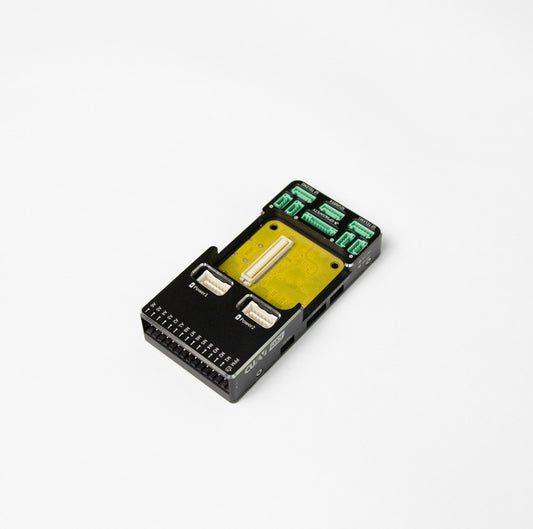
CUAV V5+ Carrier Board Autopilot Pixhawk Flight Controller - FPV RC Drone Quadcopter Helicopter VTOL
Regular price $192.64 USDRegular priceUnit price per -
MATEK F411-WTE - Mateksys FLIGHT CONTROLLER
Regular price $71.87 USDRegular priceUnit price per -
New HGLRC Zeus F722 FC - 3-6S BMI270 F7 Flight Control FC Betaflight | Emuflight | iNav | Flightone For Racing drone DIY Parts Toy
Regular price $70.29 USDRegular priceUnit price per -
Radiolink Mini PIX M8N GPS Flight Controller - Vibration Damping by Software Atitude Hold for RC Racer Multicopter Drone
Regular price From $42.92 USDRegular priceUnit price per -
Radiolink Pixhawk PIX PX4 Flight Controller - 32bit STM32F427 With GPS Holder M8N GPS Buzzer 4G SD Card Telemetry Module Mounting
Regular price From $52.49 USDRegular priceUnit price per -
Happymodel CrazyF411 AIO - F4 2-4S Flight Controller w/ Frsky Receiver & Built-in 20A BL_S ESC for RC FPV Racing Drone Toothpick
Regular price $71.20 USDRegular priceUnit price per -
New BaseCam Simple BGC 32 Bit Extended Brussless Gimbal Controller Version 3.6 with encoder for 5D2 5D3 BMCC Camera
Regular price $312.17 USDRegular priceUnit price per -
iFlight Original BaseCam SimpleBGC 32-bit Current sensor Built-in Frame IMU Extended Brushless Gimbal Controller
Regular price $264.08 USDRegular priceUnit price per -
CUAV NEW V5+ autopilot flight controller - base on FMU V5 Open source hardware for FPV RC Drone Quadcopter Helicopter Pixhawk
Regular price From $554.59 USDRegular priceUnit price per -
IFlight BGC3.0 Gimbal Controller - 32bit Alexmos BaseCam BGC3.0 Gimbal Controller Simple BGC Board Encoder Version for DSLR Brushless Gimbal tabilizer
Regular price $292.93 USDRegular priceUnit price per



